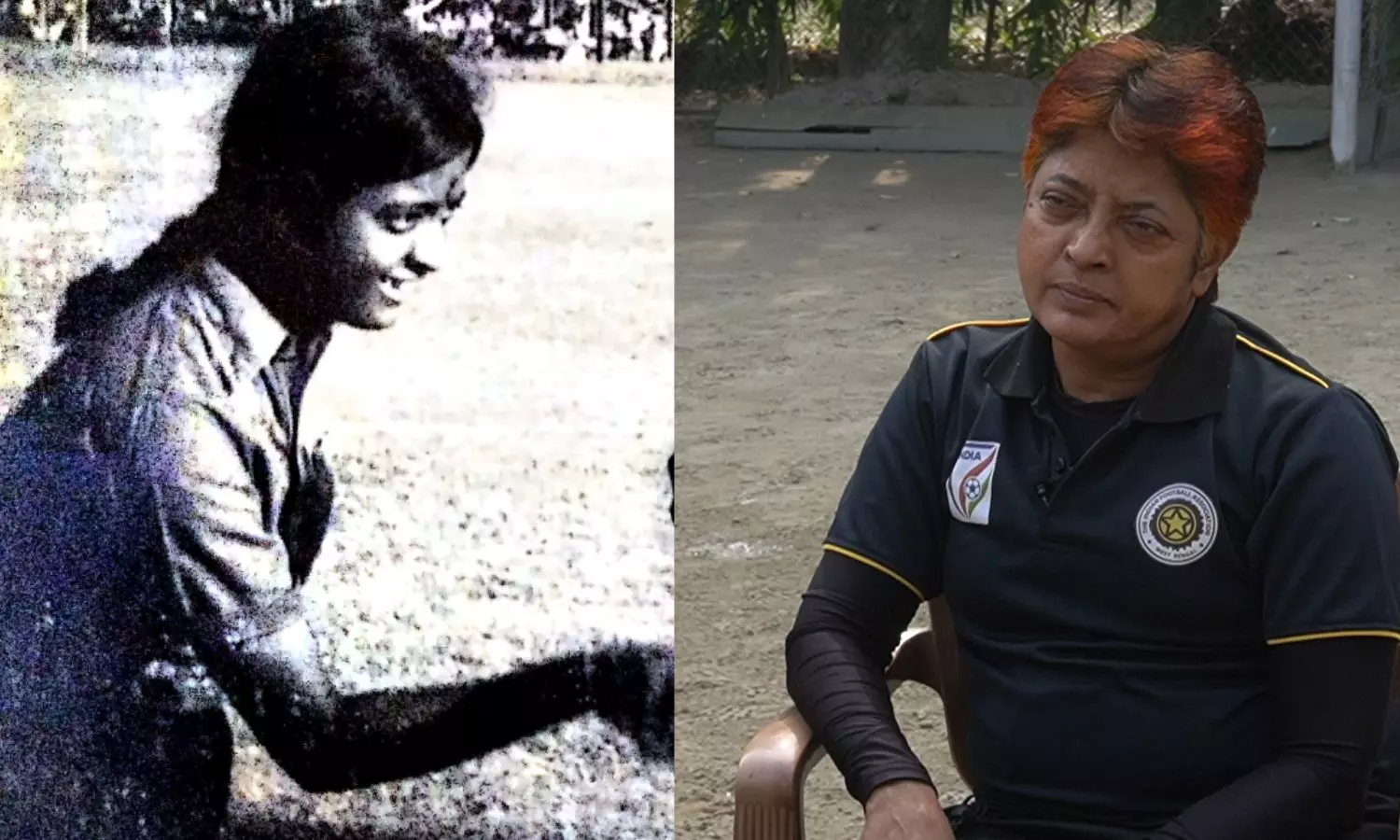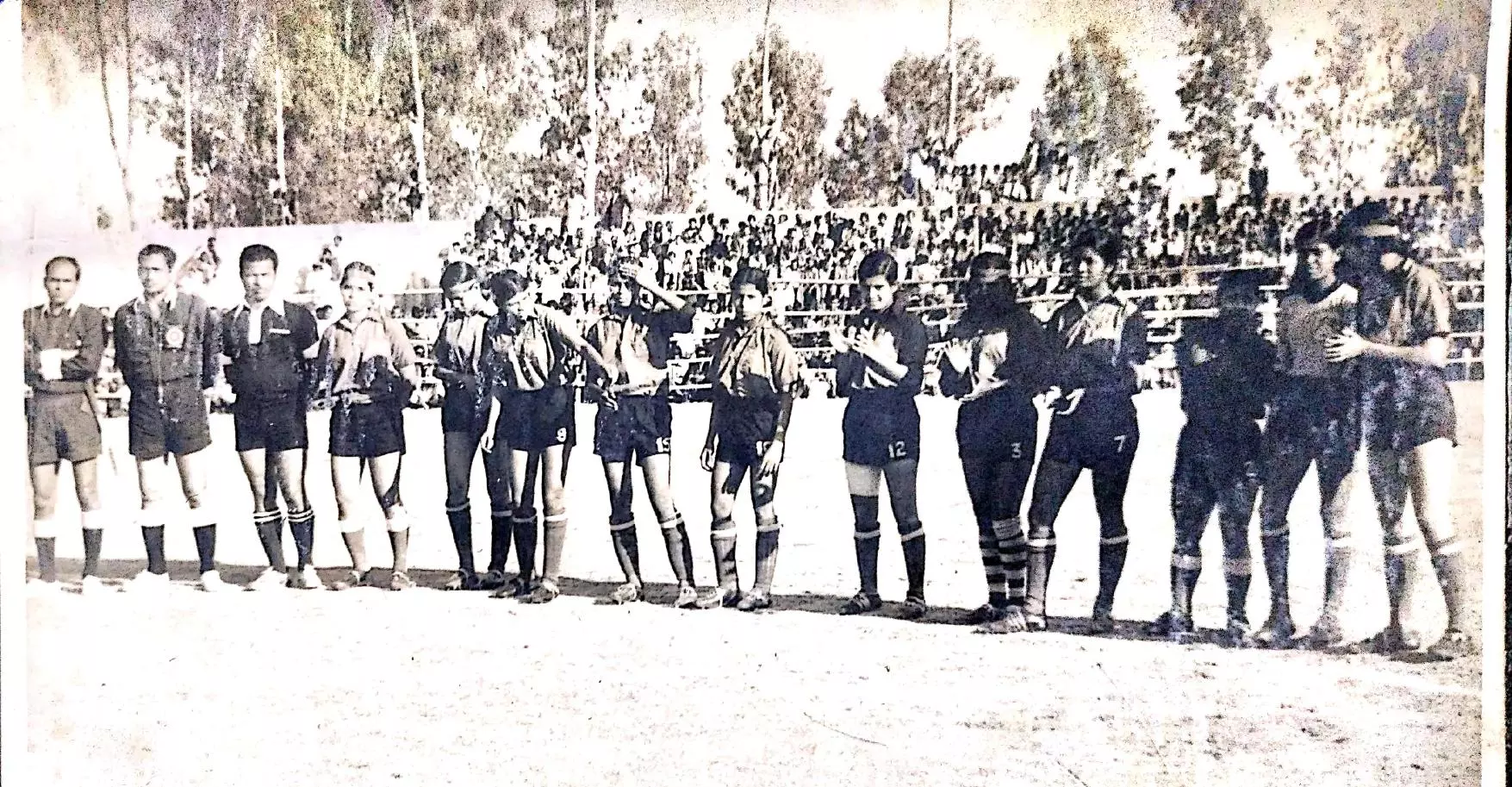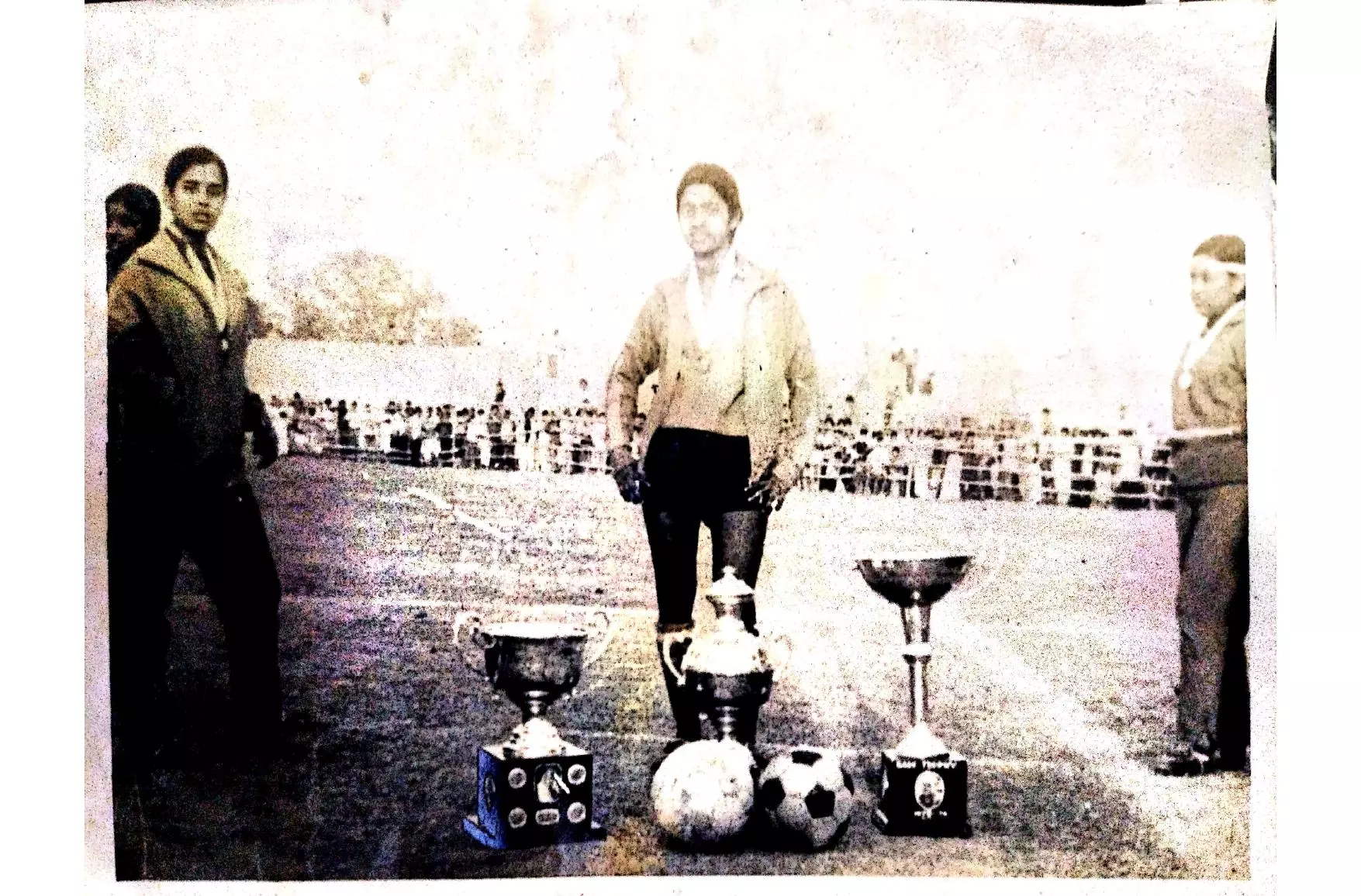Football
A ghost of the past, World Cup captain Kuntala Ghosh Dastidar ignores the noise
Even as India celebrates foreign icons from the 2022 FIFA World Cup, an Indian World Cup captain goes about her days in obscurity.

Kuntala Ghosh Dastidar (Rajdeep Saha/The Bridge)
Kolkata: Flags of Brazil and Argentina still line the streets of Kolkata even as the 2022 FIFA World Cup comes to a close. Neymar's Brazil may have been knocked out a while ago, but the city still indulgently allows his giant-size cutouts to watch over traffic at major intersections. Maybe by the time winter is over, they will have been taken down.
In the middle of all this madness, a former World Cup player and a former India captain passes under the flags of foreign countries and casts her eyes away from the Lionel Messi and Neymar cutouts as she makes her way to the Calcutta Referees' Club every morning.
Thousands of miles away from where Messi locks horns with Kylian Mbappe in the World Cup final, this former footballer holds on to her daily routine - shooing away stray outsiders from the ground of the Referees' Club.
Kuntala Ghosh Dastidar, the captain of the Indian women's team which played the 1981 World Cup, laments that even though her team played at the highest level of women's football, they are not remembered because FIFA did not recognise the women's game back then.
"Though we played at the highest level, it was an unofficial tournament. It wasn't recognised as a World Cup and it still isn't by FIFA. Even now people tell the AIFF how we haven't contributed anything to the country," Ghosh Dastidar tells the Bridge about the peculiar place in history held by her team.
A crazed city misses what's right in front
Every time the FIFA World Cup comes around once every four years, every single social person in this city is found talking about it. Some make it their entire lives. People stop each other on the road to discuss the decision to bench Cristiano Ronaldo or even the virus in the French camp ahead of the final.
At the daily market where Ghosh Dastidar goes, the fishmongers are more enthusiastic about expressing their views about strategies devised by international managers than the prices of their wares.
Some more diligent students of football refer to the time in 1950 when India 'almost reached' the World Cup.
But nobody knows Kuntala Ghosh Dastidar - a captain who led the Indian team out in a World Cup - as she goes about her day.
"It's very simple," Ghosh Dastidar says with the same conviction that seems to direct her entire life.
"We didn't market ourselves. The product (women's football) wasn't sold well. Television and media at the time didn't cover us much. Proof of what we did - be it photos or footage - just aren't there. Publicity wasn't there for us," she says.
Asked if she ever feels like a forgotten hero, Kuntala pins her hopes on new-age media. These days, the media has been able to bring back these ghosts of the past and give them a new life in digital media, she says.
Glory days of Indian women's football
The first official Women's World Cup was played in 1991 under FIFA's banner, by which time Ghosh Dastidar and her golden generation of Indian women footballers, including the likes of Shanti Mullick, Minati Roy and Judy D'Silva - had long retired.
All previous editions were deemed as unofficial, thus pushing this team's achievements to the margins of Indian football history. This team was also a force to reckon with in the Asian Cup, where they finished third in the 1981 edition and runners-up in 1980 and 1983.
It was in the years between 1975 and 1991 that women's football in India witnessed its glory days. The women's game was then administered by the Women's Football Federation of India (WFFI), which was merged with the All India Football Federation (AIFF) in 1991. It was this that started a downfall of the women's game in the country, says Ghosh Dastidar.
"The AIFF, I feel, looked at us like a stepdaughter. They had to take care of the boys as well as the girls. We felt then that a separate body should have been made for us, or at least some of the committee members of the WFFI should have been in the AIFF," she says.
Now a 60-year-old coach involved in the grassroots of the sport, the former India captain says the work has to start with the basics, instead of chasing after World Cup qualification once more.
"AIFF has taken an initiative to improve the women's team now, but it is important to start with the kids. If we don't start with the grassroots, then we won't get good quality players," she says.
'Unity pulled us through'
Because of the paucity of records, a chat with Kuntala Ghosh Dastidar on how women's football was back in India's glory days is of special significance.
She says that while the institutionalised advantages that the current players get were unthinkable for the players back then, that unity among the young girls pulled them through.

"When I got my captain's badge, I didn't feel like one because of the team's bonding. All of us were a captain and felt the responsibility to do something for the country," she said.
She does not like that players from the current team stay in their own rooms in hotels.
"Nowadays, the players stay in hotels and get good facilities. But, everyone is in their own room. In our times, humlog rajma chawal kha ke desh ke liye khela, magar humara jo bonding tha ek chhat ke niche, it was lovely (we used to eat rice and pulses and play for India, but the bonding which we had under one roof was lovely)," Dastidar recalls.
Turning down Satyajit Ray
Ghosh Dastidar was a regular footballer from her early teenage years, starting at the Vivekananda Park, but life could easily have taken her down a completely different path. Director Satyajit Ray used to be a family friend and how he even tried to convince her and her sisters to enter the acting profession.
The plucky young girl of 13 chose the footballer's life on the Maidan over the movie star's life in Tollywood, but this decision came at a financial cost.
Back in the day, she used to get a meagre Rs. 5 for exhibition matches. After fighting for their pay, that increased to Rs. 25, and then to Rs. 250.
It is following this battle that a central contract system was brought in for women players in Indian domestic football. But Ghosh Dastidar and company would not stay on to get this benefit.
"We don't get any pension also because we weren't recognised. Here's hoping that the next generation does," she says.
Attacks by locals, help from Sweden
Eventually, the conversation veers to how different the on-ground realities of being a woman footballer was back in the 1970s-1990s. With a smile, Ghosh Dastidar walked down memory lane, providing a shock or two to this new-age football enthusiast.
She speaks of an incident with the Sweden national team, which perhaps pioneered equal treatment for the women in blue.
"Both the teams were returning to Kolkata from Pune by train. Ours was a general compartment while the Swedish were provided with a first-class AC compartment. On seeing this, the Sweden team's manager protested and threatened to not play further games if we were not given the same treatment. We also had different accommodations - they were slated to stay at the Great Eastern Hotel. That too changed thanks to the Swedish team manager," she says.

Sweden might have contributed to the health of women's football in India, but within the country, the experiences ranged from the absurd to the dangerous for these pioneers.
"We had gone to Bolpur to play a match to spread women's football, and we saw people running away from the ground! The reason was that since we were playing in shorts, they could see our legs," Ghosh Dastidar says with an incredulous laugh.
"The second obstacle which we had to face was from the doctors. They would tell us that it would be tough for us to be mothers if we played football. This was a big talking point back then, but none of us stopped," she says.
One time, the national team was almost attacked by a crowd of villagers because they had short hair.
"We had gone to Jhikira, near Sandeshkhali (in the Sunderbans) to play a match. Most of us were skinny and had short hair. As soon as we entered the ground, the locals thought our team consisted of boys. They thought we had managed to buy our way in and field boys. We had to make a run for our lives, quite literally, as they had surrounded the place we were staying in and threatened to burn it. Thankfully, we were able to quietly escape late in the night," Ghosh Dastidar recalls with a shudder.
The team led by Kuntala Ghosh Dastidar took the Indian tricolour to uncharted territories back in the day, without much reward from within the country. Four decades later, even as World Cup fever grips her city, her achievements remain as forgotten as they were.






